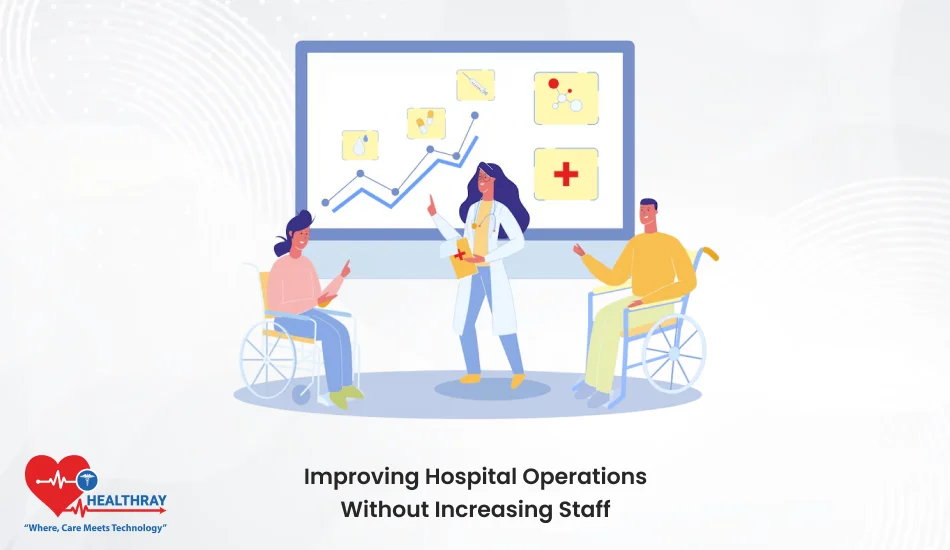Timely processing of samples for test results that can be relied upon, and delivering them without much hassle makes managing a diagnostic lab considerably more; however, a number of obstacles are encountered by many laboratories as they try to deal with adages that include outdated technology, inefficient workflows, and issues in data management.
These challenges may affect not just implementation timelines and operating costs but even patient outcomes.This is basically a guide on how integrated diagnostic lab solutions can bring about a revolution in the logistics of laboratory workdays. It moves on to give a glimpse of the newest tools, practical approaches towards optimization, and some guidance on how to establish compliance and quality assurance practices.
So let us see how the laboratories can work toward eliminating inefficiencies, embracing modernity, and ultimately helping the community in that way.
Role of LIMS To Streamline Lab Workflows
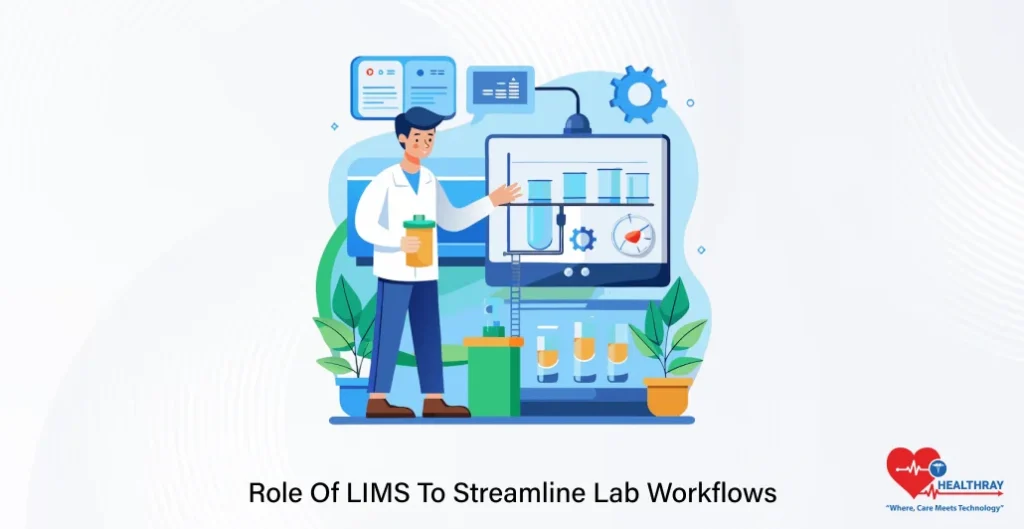
Preciseness in keeping data and processes centerstage in successful operations for any diagnostic laboratory-thus standing out as central to Laboratory Information Management System transformation for those laboratories aspiring to turn operational. More or less a functional centralized platform for the operation of laboratory activities-from sample-tracking down to delivering results.
Key Features of LIMS
- Sample Management: Tracks samples from collection to reporting, reducing misplacements and errors.
- Data Integration: Consolidates information from various devices and systems, ensuring seamless data flow.
- Automated Reporting: Procures and delivers precise test results, thus saving time and minimizing manual intervention.
- Regulatory Assistance: Supports adherence to regulatory requirements through audit trails and reporting.
Benefits of LIMS Implementation
- Enhanced Efficiency: Reduce turnaround times while automating repetitive tasks like data entry and reporting.
- Better Accuracy: Systematic handling of samples and integrated quality checks reduce human error.
- Scalability: Mature to accommodate and provide more in volume without sacrificing quality.
- Continuous Monitoring: Provides live dashboards to monitor laboratory performance and avert obstruction.
Practical Examples
For example, a mid-size diagnostic lab implemented LIMS as a measure to address what it pictured as increased sample volumes. In less than six months, this same lab was claiming reductions in turnaround times by as much as 30% alongside a considerable reduction in errors resulting from manual handling of data.
This increased patient satisfaction as well as operationality. An appropriately configured LIMS is what underpins laboratory growth and success. Such a system creates an environment where employees can at least spend most of their time on an analysis of possible processes instead of doing administrative work.
Automation Technologies in Diagnostic Laboratories
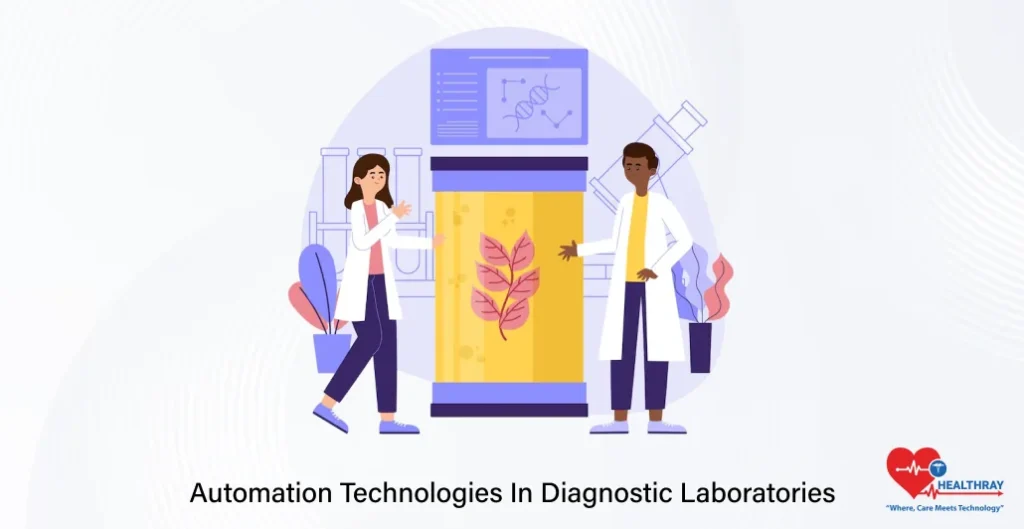
Diagnostic laboratories are set to be keeping increasing volumes of tests and wanting shorter durations within which results come back and more accurate results, hence automation technologies become the game-changing effect with which laboratories would streamline processes, reduce errors and increase productivity.
Types of Automation in Diagnostic Labs
- Pre-analytical automation: Consists of sample sorting, labeling, and preparing for testing. Eradicating errors resulting from manual handling increases efficiency.
- Analytical automation: It is the application of sophisticated equipment in automating the testing process for utmost precision in testing performance.
- Post analytical automation: Hastens interpretations on results and report generation and archiving, thus limiting delay in provision of outcomes.
- Smooth integration: Connected systems consolidate all phases (Pre, analytical and post) in one workflow channel for a smooth run.
Advantages of Automation
- Faster Turnaround: Automated systems process large volumes of samples very quickly and deliver results much faster than manual processing.
- Value Added Accuracy: Machines instead of humans eliminate human error in results that are consistent and uninterrupted over time.
- Freeing Resources: Automation directs technicians in critical tasks such as result interpretation or patient care.
- Scalable: A lab is able to enlarge its operations without any corresponding increase in headcount or cost.
Selecting the Proper Automation System
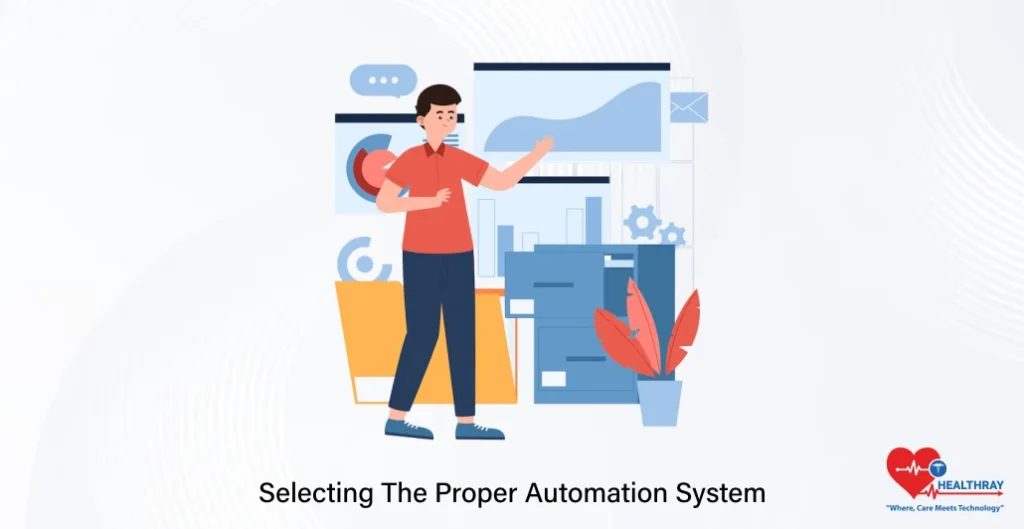
The essential fields of diagnostic labs that should judge an automation system would include:
- Compatibility with Existing Systems: The automation would easily integrate into the current lab system and thus no crushing interruption is expected in services.
- Cost-Effectiveness: Expenses would need to be weighed against the operational goal to ensure that ROI is met.
- Customizability: The systems need to be flexible enough to adapt to the individual needs of each lab.
The Automation Argument
Today, a regional diagnostic laboratory that employs automating blood-testing systems has increased its daily testing capacity by up to 40%. With lesser manual handling, unwarranted errors of samples have reduced, thereby improving the confidence of physicians and patients in quality assurance.
It is more than just keeping pace with advancements in technology; it is transforming the way diagnostic laboratories function. Through sophisticated but suitable automated tools, labs optimize performance and satisfy the growing demands of healthcare providers and patients alike.
Optimizing Laboratory Workflows
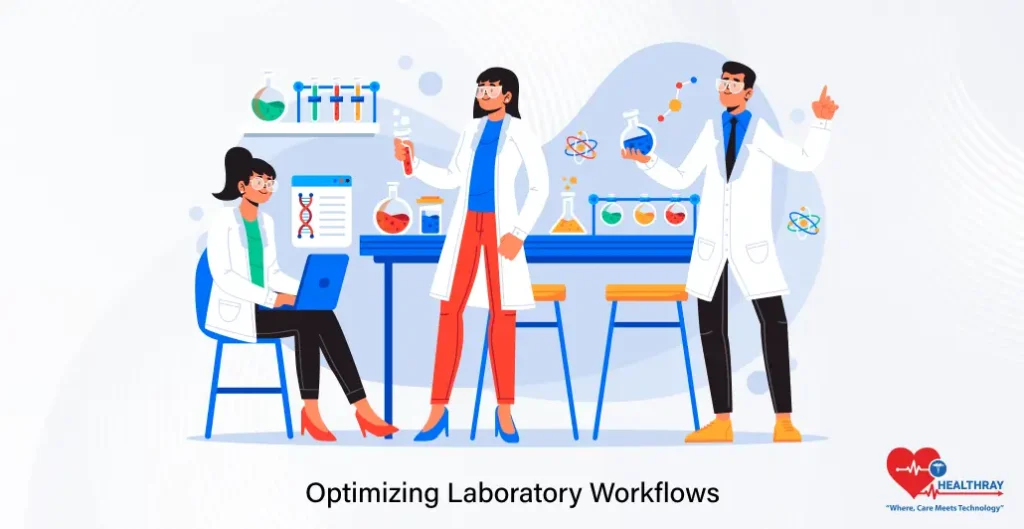
The optimally designed workflows are the key to a smoothly functioning laboratory.
These litanies of processes are utilized to deal with the growing demand of laboratories, promote efficiency, and enhance the accuracy of results. Unfortunately, many labs are hampered by bottlenecks, redundancy, and miscommunication among teams.
Steps to Optimize Laboratory Workflows
Examine Current Process
Identify functions that take away too much time or lead under conditions of frequent error.
Map all the workflow functions from sample collection through to result delivery in order to isolate the slow steps.
Standardization of Processes
Protocols for sample handling, testing, and reporting should be made uniform.
Inconsistency should be reduced through clear documentation and standard operating procedures (SOPs).
System Integration
Introduce tools such as Lab Management System and automation systems so that manual handling can be minimized.
Seamless Communication between Technologies for Real-Time Data Updates:
Reduce Duplication
- Eliminate unnecessary steps or combine tasks that duplicate each other.
- For instance, pre-analytical automation can be made possible-liberate it manually from the sample tagging.
Improve Communication
- Maintain project updates for all teams by way of dashboards and communication platforms.
- Provide avenues for the collaboration of lab technicians, admin, and others outside the organization.
Benefits of Workflow Optimization
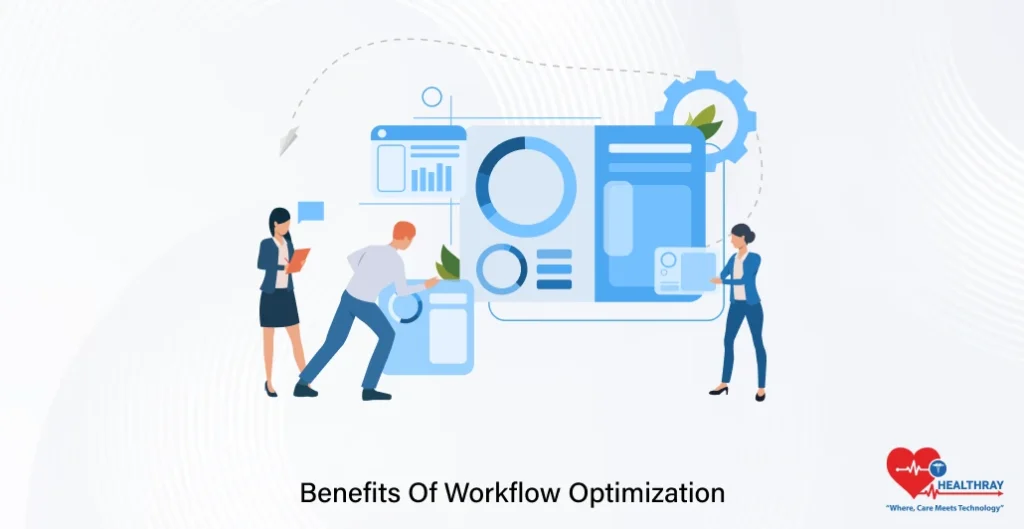
- Enhanced turnaround times : It becomes faster by the more efficient processing of tests and speeding up the dispatch of results.
- Improved resource allocation: relieved manpower and efficient use of space and equipment.
- Higher accuracy: Errors in streamlining processes result in better reliability.
- Better compliance: Clearer and standardized procedures make achieving regulatory requirements easier for labs.
Measuring Successes in Workflow Optimization
- Measure Sample Processing Time, error rate, and increase staff productivity, and quality performance indicators (KPIs).
- Synthesize feedback from staff and clients to recognize gaps to be improved further.
Example of Improving Work Processes:
A diagnostic lab that processes over 500 samples per day reduced processing time by 25% after mapping and optimizing the workflow. They not only automated sample tracking but improved their efficiencies within and created better staff satisfaction by streamlining manual processes.
Workflow improvement is not a standalone event but rather a continuous process. A laboratory remains flexible and operates at its optimum in a highly competitive environment by carrying out regular evaluations and changes.
Compliance and Quality Assurance
No compromises are accepted in the diagnostic laboratories’ readiness in compliance and quality assurance. The laboratories will be very well regulated and extremely outlined. These standards and directions will be directed towards delivering accurate, reliable results in data transactions while protecting the health and safety of patients.
Key Regulatory Standards Applicable to Diagnostic Laboratories:

- ISO 15189: Sets the requirements for medical laboratories in terms of quality and competence. CLIA (Clinical Laboratory Improvement Amendments): These standards regulate laboratory tests throughout the U.S.
- HIPAA: Protects health information privacy and security of patient data.
- CAP Accreditation: This also provides oversight to ensure quality rather than just competency.
Steps for Compliance:
Undertake Analysis of the Regulatory Requirements
Stay informed on both national and international standards applicable to your laboratory. Regularly review changes to policies and incorporate them into operations.
Have a Strong Documentation System
Details of procedure commencement to end be kept for the whole result-reporting process. Traceability would be noted, even in audit trails, via LIMS.
Conduct Regular Audits
Include both internal and external audits to find out where the laboratory complies gracelessly. Audit-based corrective actions, improvement schemes must be implemented.
Staff Training
Ongoing compliance and standard operating procedures training on informed consent analysts, sample handling, data protection, and correct equipment use.
Technology Avenues
Automated systems to track processes and identify possible non-fulfillments.
Synchronization of means for current compliance-critical updates and alerts.
Quality Assurance Role in Laboratories Consistent Values
Ensures repetitions of results by tests and verifies the accuracy of any result.
Trust of the Customer: This assurance is put up among the patient and health care provider. Efficiency of Operation: It will identify areas for improvement for better performance in a lab.
Best Practice in Quality Assurance
- Standardizing processes to reduce variability results in tests.
- Quality control materials and participation in proficiency testing programs.
- Monitoring key metrics error rates, turnaround times, and equipment performance.
Example from Real Life
A diagnostic unit had a problem with compliance due to improper documentation habits. While the lab leads regularly scheduled training and adopts a LIMS, regulatory demands are satisfied, and the lab also earned ISO 15189 certification. Of course, the certification lends them credibility and more partners in the healthcare field.
Compliance and Quality Assurance do more than keep a lab’s results credible and its standing in the healthcare industry consistent; they also do more than provide institutions with an income source.
Cost-Benefit Analyses New Technologies’ Implementations
Diagnostics Labs may find adopting new technologies a costly venture, at least initially. Nevertheless, an analysis of cost-benefit will usually tell that all this expenditure is justified in the long run and relatively few expenses were incurred by the outgoings in the first years of implementation.
Cost Breakdown
- Setting the Initial Cost : The initial cost involves the purchase of new equipment. Infrastructure changes necessary to support new technologies.
- Onboarding and training : Covering costs incurred by training and instructing the workforce for optimally using newly installed technologies
- Maintenance and Upgrades : Caretaking for the ongoing service and occasional software updates ensure that the system keeps working well.
- Transitional Downtime : There might be a temporary loss in productivity as the staff adjusts to new systems.
Perspective Description on Benefits High Efficiency:
Much of the time required to process analytical results is cut using automated machines, providing higher results for analysis at a single time.
- With the joining of systems, redundant processes are eliminated, and flow is continuous.
- Reduction of Errors : Advanced technology cuts human error down and makes results more accurate.
- Compliance and Audit Readiness : Automatic tracking and documentation facilitate adherence to regulations.
- Scalability : Current systems in the laboratories allow for increased operation without cost-related proportional increases.
- Enhanced patient satisfaction number of clients : Shorter and more accurate results lead to an increase in trust among patients and health partners.
ROI Computation
ROI means measuring: increased revenue owing to faster turnaround times with higher accuracy; cost savings gained through decreasing operational costs like labor or error costs; and, long-term benefits by making the technology future-proof against competition and changing needs.
A genuine example is: a diagnostics lab spent $150,000 on an automated sample handling system. Within a year, the lab reported:
- Cuts down sample processing time by 25%.
- Increases the amount of testing by 30%.
- Reduces the error, thus saving $20,000 per year in costs associated with errors.
For the past three years, this return on investment has been quite evident. The laboratory, on the one hand, has had the initial investment paid back, while also augmenting the flow of income and goodwill.
Testing the Balance Between Cost and Value
Along with cost, labs should factor in different non-monetary advantages such as better care for patients, less stress among employees, and increased credibility. These factors ever-so-often will have a positive knock-on effect in improving business results over time.
Training and Change Management
The degree to which new technology and processes are open to the diagnostic lab is only as good as the people using them. Training and change management are critical to the success of ensuring that staff accept the new tools and workflows without compromising their day-to-day work.
Importance of Training
- Skill Enhancement : New technology often comes with specialized knowledge. Training instills competence and confidence in employees.
- Error Reduction : Trained personnel commit fewer errors while ensuring that results interpret accurately and reliably.
- Compliance Assurance : Trained personnel increase awareness of regulatory requirement changes and SOPs, reducing penalties.
Key Phases in Training Effectiveness
Assess Training Needs:
- Identify gaps in skills or knowledge.
- Specific training sessions might be required in software usage and in operating automated equipment.
Provide Hands-On Training:
- Use simulation or live demonstration to assist better learning.
- Combine theoretical studies with practical applications.
Technology and Change Management Training:
- Conduct periodic refreshers and updates for new features or upgrades at set times.
- With certification, the engagement becomes real, and expertise becomes recognized.
Use Multiple Training Methods:
- Utilizing classroom-style learning blended with an online module and one-on-one mentoring recognizes that people learn in different ways.
Change Management for Smooth Transition
Communication Early and Open:
Explain in detail why a proposed change is necessary and how it would benefit the lab and the entire staff.
Allay concerns about job security, workload, or ease of adaptation.
Engagement of Key Stakeholders:
Involve team leaders in the planning stages so change-champions can set a good example.
Gradual Rollout:
These would often start with either pilots or phased-in deployments whereby learning occurs for identifying and correcting potential issues prior to the full-fledged rollout.
Provide Sustained Support:
Please set up a help desk with team members to act as experts during the transition.
Request feedback and course-correct as needed afterwards.
Benefits of Training and Change Management
- Higher Adoption Rates: Training sufficiently and well makes acceptance of new technology and process very likely.
- Reduced Downtime: Clear and structured planning allows the transition to happen with minimal disruption.
- Improved Morale: Supportive environments improve workforce engagement and productivity.
- Operational Efficiency: A well-trained workforce will harness the gain potential from the new instruments.
Example of Success
A diagnostic lab introducing LIMS received immense resistance from employees, mostly owing to fear of new complexities. The LIMS lab assured staff they had support: workshop training, “tech ambassador” teams. In three months, the team achieved tremendous adaptation and sighted a 20% increase in efficiency.
Training and change management processes are not just a single shot; they are an ever-flowing continuum to ensure that every person in the system remains on point in regard to their skill and the lab’s strategic goals.
Conclusion
The need to streamline operations within diagnostic labs is increasingly becoming paramount to satisfy accuracy, efficiency, and patient satisfaction. From comprehensive solutions Hospital Management System, automation, optimized workflows, and compliance strategies a clear route exists toward meeting those demands.
Investing in the right technologies and developing a culture of ongoing learning through training will assure that labs are competitive and remain future-ready. Although the path entails upfront funding and hurdles of change management, long-term benefits around enhancements in efficiency, scalability, and credibility will easily outweigh these costs.
Diagnostic labs adopting these innovations at the same time strengthen their place as key pillars of the healthcare ecosystem, along with advanced operational platforms. Times are ripe for the evaluation, adjustment, and implementation of these solutions.



